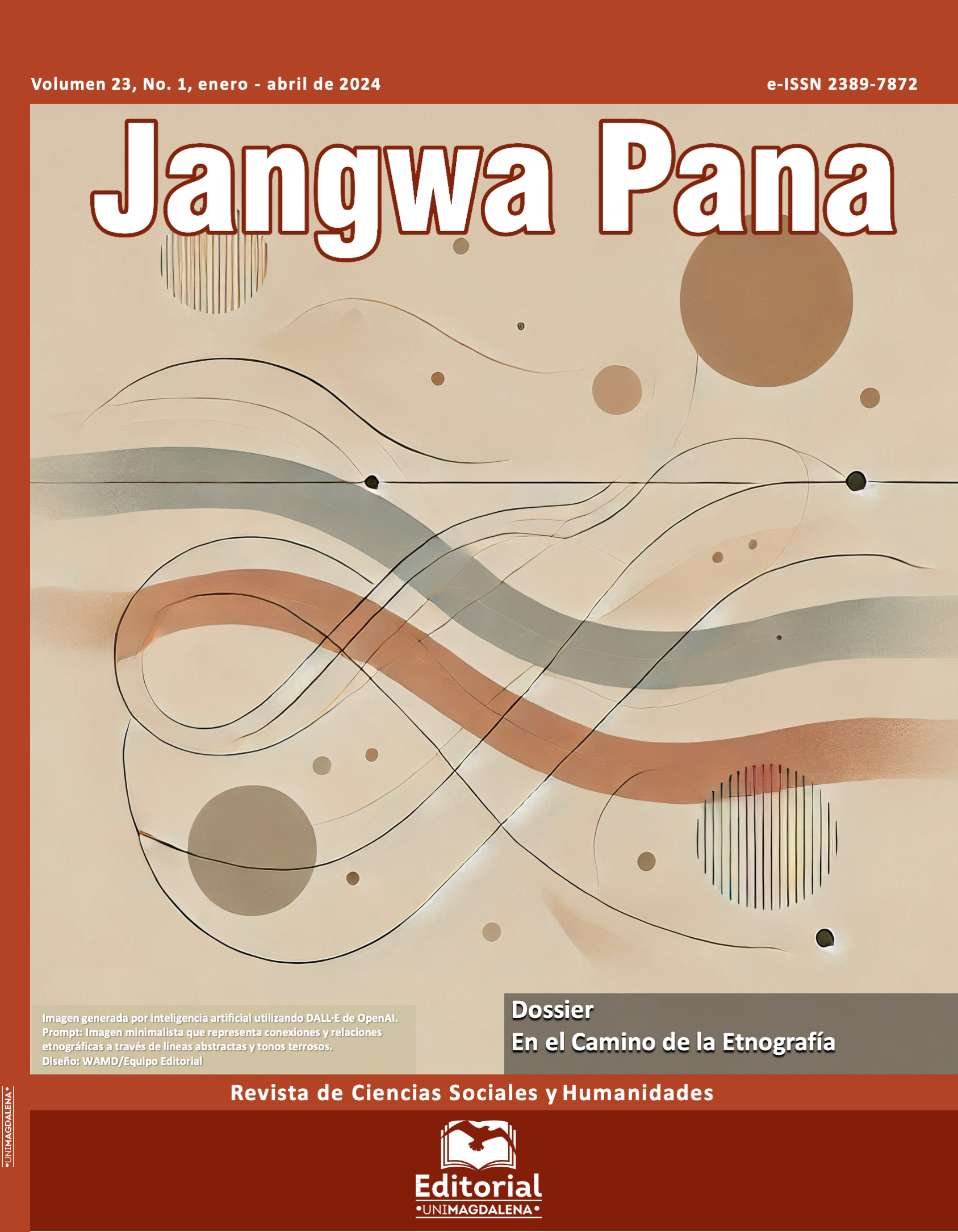Mojanes and saints: The oral tradition and the religious system of the peasants of Fúquene, Cundinamarca
Main Article Content
Abstract
Downloads
Article Details
References
Albert-Llorca, M. (2002). Les Vierges Miraculeuses. Légendes Et Rituels. Gallimard.
Ancízar, M. (1970). Peregrinacion de Alpha. Biblioteca Banco Popular.
Bateson, G. (1977). Vers une Ecologie de l’Esprit. Editions du Seuil.
Bremontd, C. L., Le Goff, J., & Schmitt, J. C. (1982). L’Exemplum, Typologie des sources du Moyen Age occidental. Brepols.
Carrillo, M. (1997). Los caminos del agua, tradición oral de los raizales de la sabana de Bogotá [Tesis de pregrado en Antropología]. Universidad de Los Andes.
Correa, F. (2004). El sol del poder. Simbología y política entre los muiscas del norte de los Andes. Universidad Nacional de Colombia.
Delpech, F. (2003). Mujeres, canales y acueductos: contribución para una mitología hidráulica. En J. González, & A. Malpica (Coords.), El agua mitos, ritos y realidades (pp. 61-102). Anthropos Editorial
Durkheim, E. (1968). Las formas elementales de la vida religiosa, el sistema totémico en Australia. Schapire.
Elias, N. (1987). La société des individus. Fayard.
Fals-Borda, O. (1961). Campesinos de los Andes. Estudio sociológico de saucío. Universidad Nacional.
Foster, G. (1967). Tzintzuntzan. Mexican Peasants In A Changing World. Little, Brown and Company.
Galinier, J. (1997). La Moitié Du Monde. Le Corps Et Le Cosmos Dans Le Rituel Des Indiens Otomi. Presses Universitaires De France.
Hobsbawm, E. (2008). Les Bandits. Editions la Découverte.
Langebaek, C. (1995). Regional Archaeology In The Muisca Territory. Studies In The Valles De Fúquene And Susa. University of Pittsburg Latin American Archeology Publications.
Lévi-Strauss, C. (1992). Historia de Lince. Anagrama.
Losonczy, A. M. (1997). Les Saints Et La Forêt. Rituel, Société et Figures De L’échange Entre Noirs et Indiens Emberá (Chocó, Colombie). L’Harmattan.
Losonczy, A. M. (2001). Santificación popular de los muertos en cementerios urbanos colombianos. Revista Colombiana de Antropología, 37, 6-23. https://doi.org/10.22380/2539472X.1273
Maître, J. (2010). La religion populaire. En Encyclopedie Universalis. https://www.universalis.fr/encyclopedie/religion-la-religion-populaire/
Muchembled, R. (1978). Culture Populaire et culture des élites. Flammarion.
Muchembled, R. (2000). Une histoire du diable XII-XX siècle. Éditions du Seuil.
Nates, B. (1997). De lo bravo a lo manso, territorio y sociedad en los Andes (Macizo colombiano). Ediciones Abya-Yala.
Perrin, M. (1995). Le Chamanisme. Presses Universitaires de France.
Robin, V. (2008). Miroirs De L’Autre Vie. Pratiques Rituelles Et Discours Sur Les Morts Dans Les Andes De Cuzco (Pérou). Société D’Ethnologie.
Surgy, A. (1988). Le Système Religieux Des Evhe. L’Harmattan.
Velandia, R. (1979-82). Enciclopedia histórica de Cundinamarca (Vol. 2). Biblioteca de Autores Cundinamarqueses.
Vengoechea, C. (1992). Los tunjos en la tradición oral de los campesinos andinos [Tesis de pregrado en Antropología]. Universidad de Los Andes.
Wolf, E. (1971). Los campesinos. Editorial Labor.

